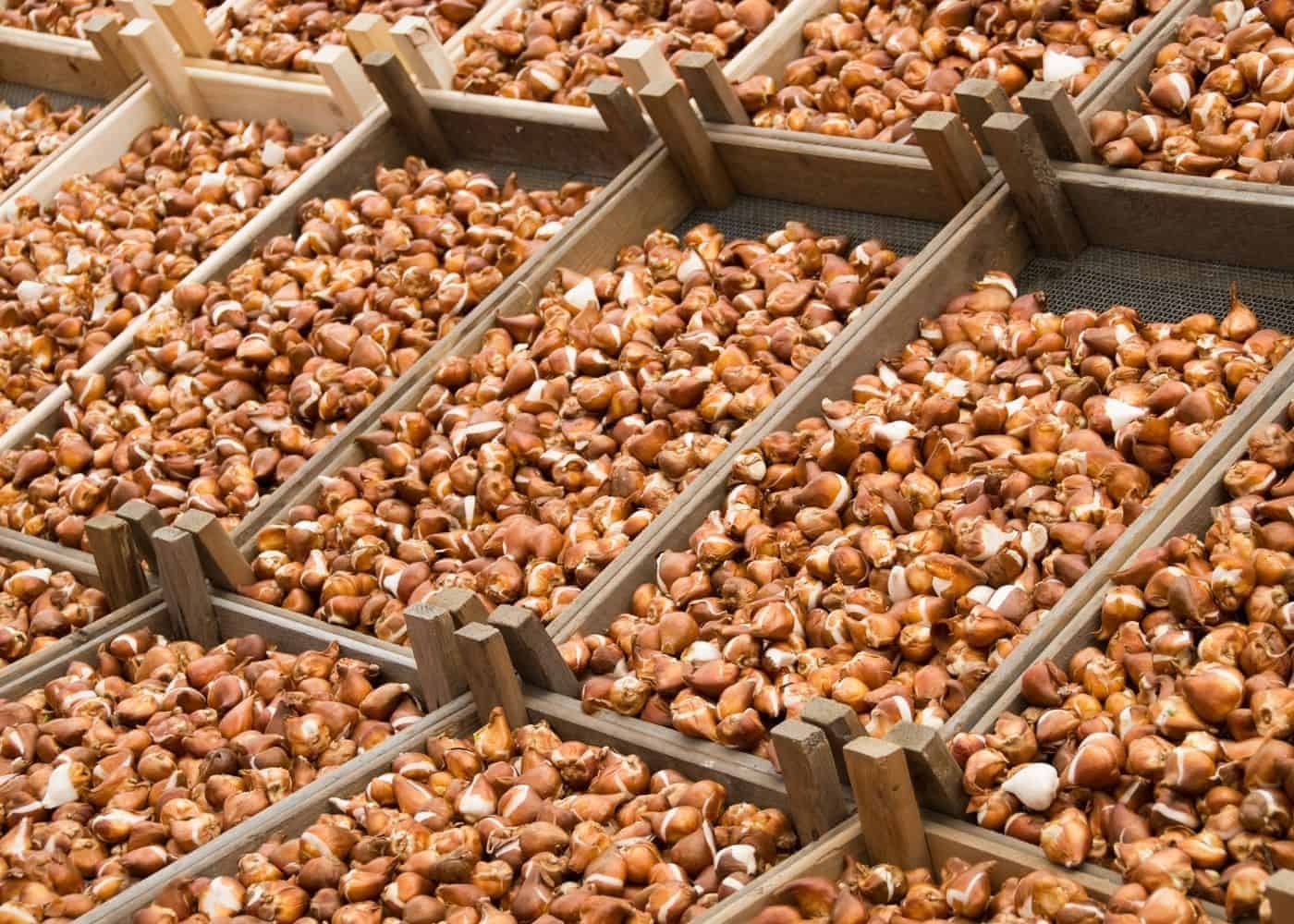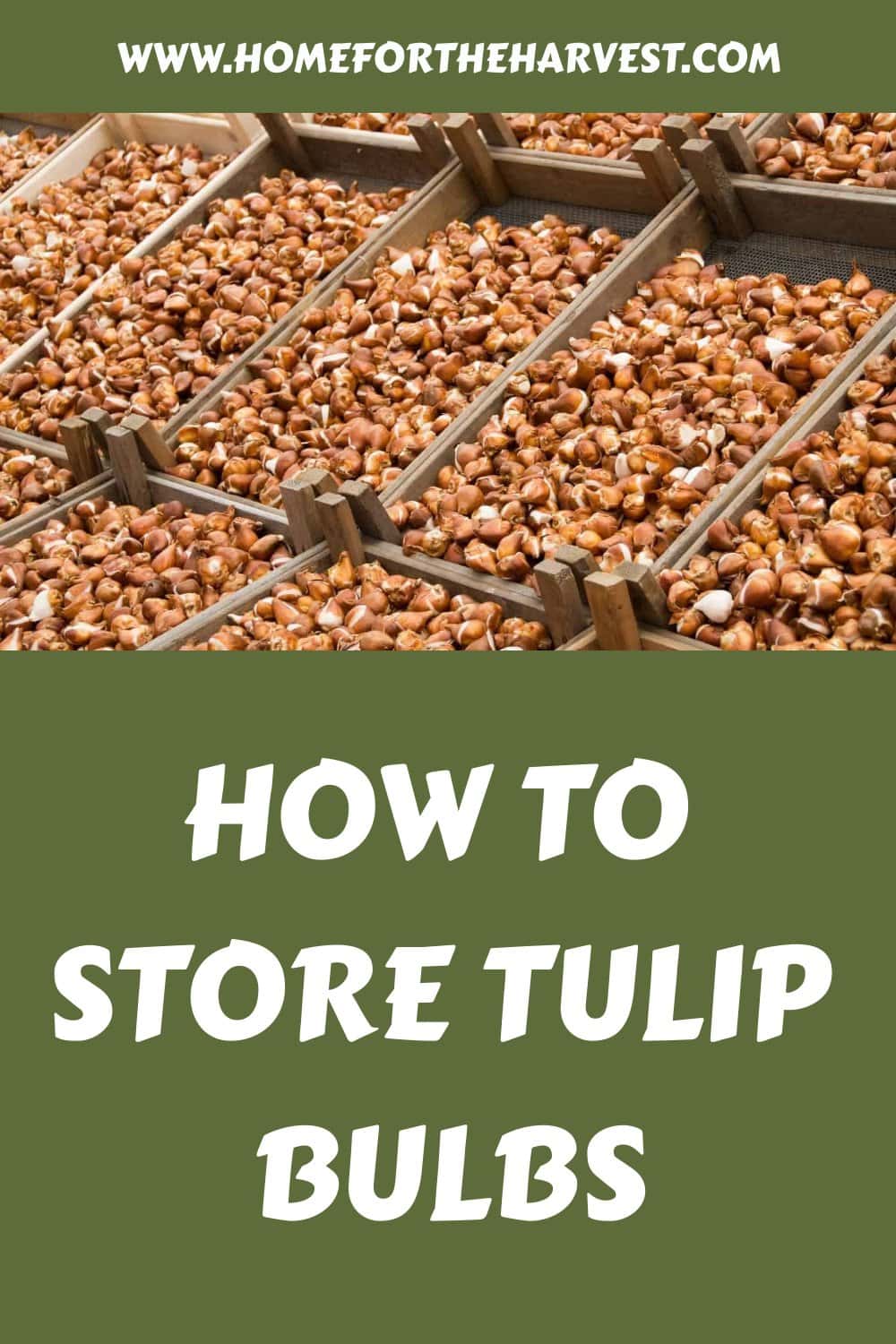While tulip bulbs can be left in the ground year after year, many varieties tend to flower best if the bulbs are stored in controlled conditions. Lift the tulip bulbs out of the soil and let them dry off. Place the tulip bulbs in mesh or paper bags in a well-ventilated location with good air circulation. Keep the space just below room temperature, about 65°-65°F (18°-20°C).
The basics of storing tulip bulbs
The process of storing tulip bulbs includes lifting the bulbs out of the soil, drying the bulbs, collecting the offsets, and storing them in a well-ventilated location until the appropriate time for fall planting.
Tulip bulbs are not put in storage until the plant’s foliage has died back naturally. While spent flowers are deadheaded, the leaves of the tulip plant are left on the plant and allowed to photosynthesize for about 4-6 weeks after blooming. Leaving the green leaves on the tulip plant while removing the spent bloom allows the plant to focus on growing offset bulbs off the lateral sides of the mother bulb. Bulbs are only lifted for storage once the leaves have died back naturally as summer temperatures warm up.
Lifting tulip bulbs is important to separate offset bulbs from the mother bulb. Tulip bulbs are unique among flowering bulbs in that the mother bulb flowers only once. The main bulb flowers and then begins to decline as the plant puts its energy into the offsets. In storage, offsets are separated off the main bulb and stored individually.
Tulip bulbs are stored at a relatively warm temperature after they are lifted. In nature, tulips grow in the spring and fall into an apparent dormancy during the hottest and driest portion of the summer. The tulip bulbs develop a flower bud during this late summer period as they grow. Bulbs in storage will also develop a flower bulb in storage that will bloom the following spring.
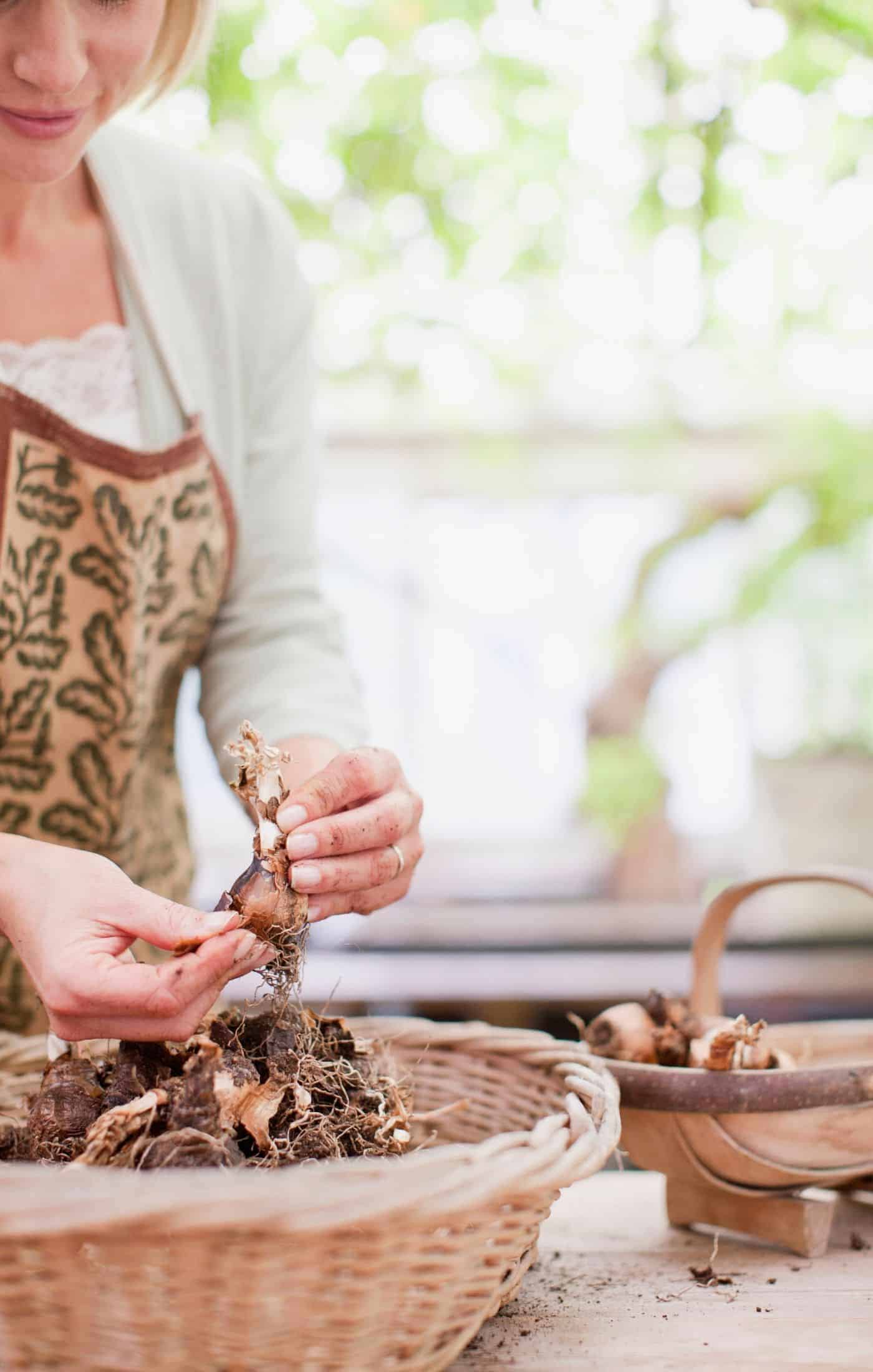
Reasons to lift and store tulip bulbs
Tulip bulbs are sometimes dug up and stored during the summer before being planted back out in the fall. This practice is more common in areas with climates not ideal for tulip growth or where garden maintenance is managed meticulously.
Here are some of the main reasons gardeners lift and store their tulip bulbs:
- To prevent rot: In areas with wet summers, soil can stay damp and cause bulbs to rot.
- To avoid disease: Digging up bulbs can help prevent soil-borne diseases from affecting them.
- To control pests: It protects bulbs from pests like rodents or insects that may eat or damage them.
- To propagate bulbs: Lifting allows gardeners to divide offsets and remove older, non-productive bulb parts.
- For better growth next season: Storing bulbs in a controlled environment ensures they get the dormancy period needed for next season’s growth.
- To rearrange garden space: It provides an opportunity to rearrange or redesign garden areas.

How to lift tulip bulbs
The first step in storing tulip bulbs is to lift them properly from the soil. This includes timing when to lift them as well as the actual unearthing itself.
Planning for lifting bulbs starts as the spring tulip flowers begin to fade. Deadhead the plants by removing the spent flowers as soon as the blooms are finished. This is also a good time to apply a high-quality bulb fertilizer. Removing the flower (potential seed head) encourages the plant to put its energy into reproducing via underground offset bulbs. Making additional nutrients available with the fertilizer gives the plant the inputs it needs for optimal offset growth. The plant can be watered and fertilized until the leaves start to die back naturally.
Additional Reading: What to Do With Tulips After They Bloom
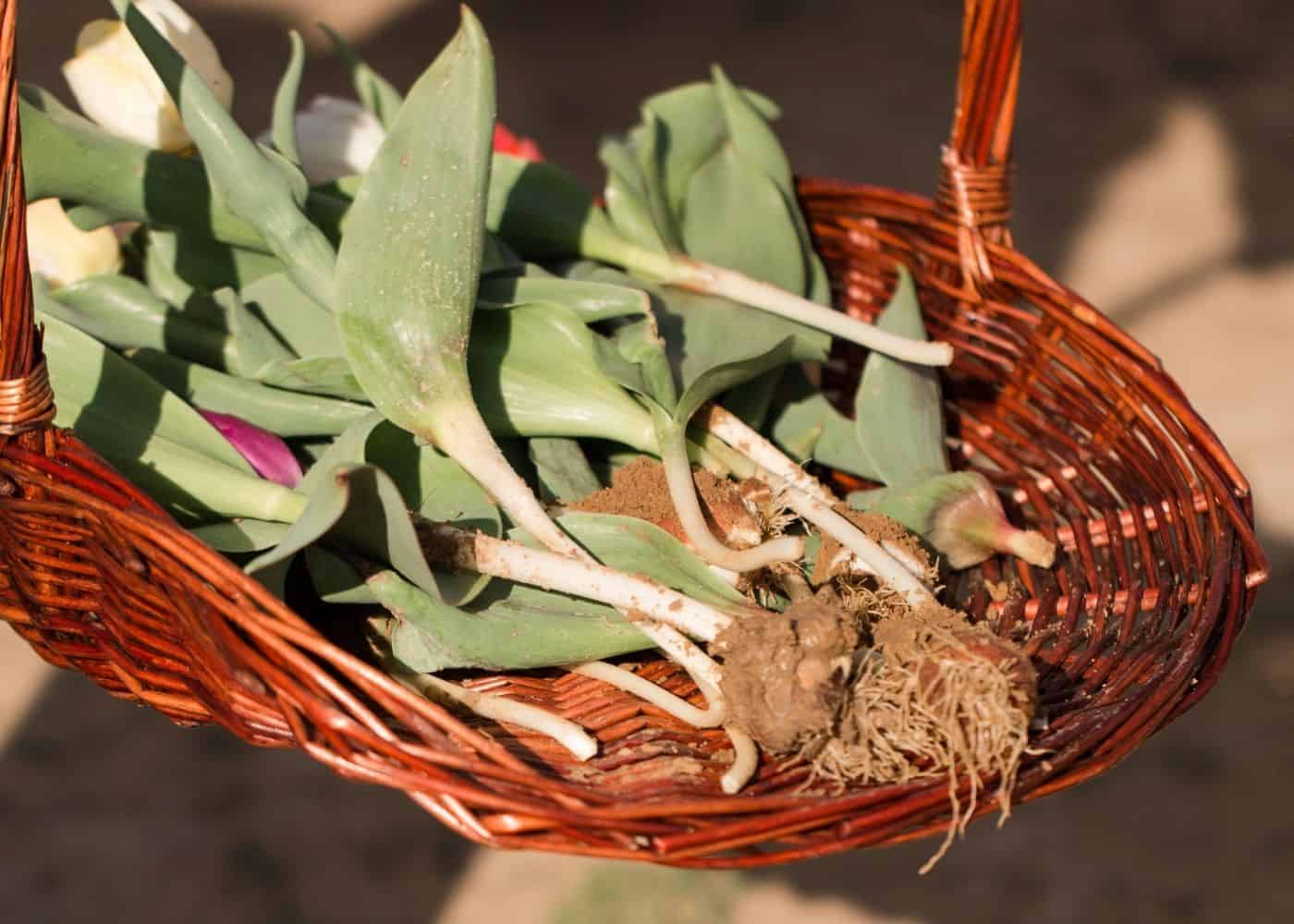
Tulip foliage generally dies back to the ground in mid-summer. Once the leaves have shriveled naturally, it’s time to lift the tulip bulbs. Tulip lifting usually occurs in early or mid-July. Do not dig up tulip bulbs while the leaves are green, as the bulb is able to recover a significant amount of energy and nutrients from the leaves when they are left to fade naturally.
Use a garden spade to loosen the soil around tulip bulbs. Carefully remove the bulbs from the soil. Each bulb that was planted the previous fall should have formed several offset bulbs around the sides.
Drying tulip bulbs for storage
Carefully pick up each tulip bulb. Many of the bulbs will still have attached roots and dried foliage at this point. Brush off excess soil without damaging the bulbs or their protective “tunic” coverings.
Place the bulbs in a cool, dry spot out of direct sunlight to dry. A covered carport or other well-ventilated space will generally do quite well for this as long as it is in the shade. The soil will fall off the bulbs as they dry. Observe the bulbs regularly as they dry and flip them if required. This initial drying usually takes only a few days.
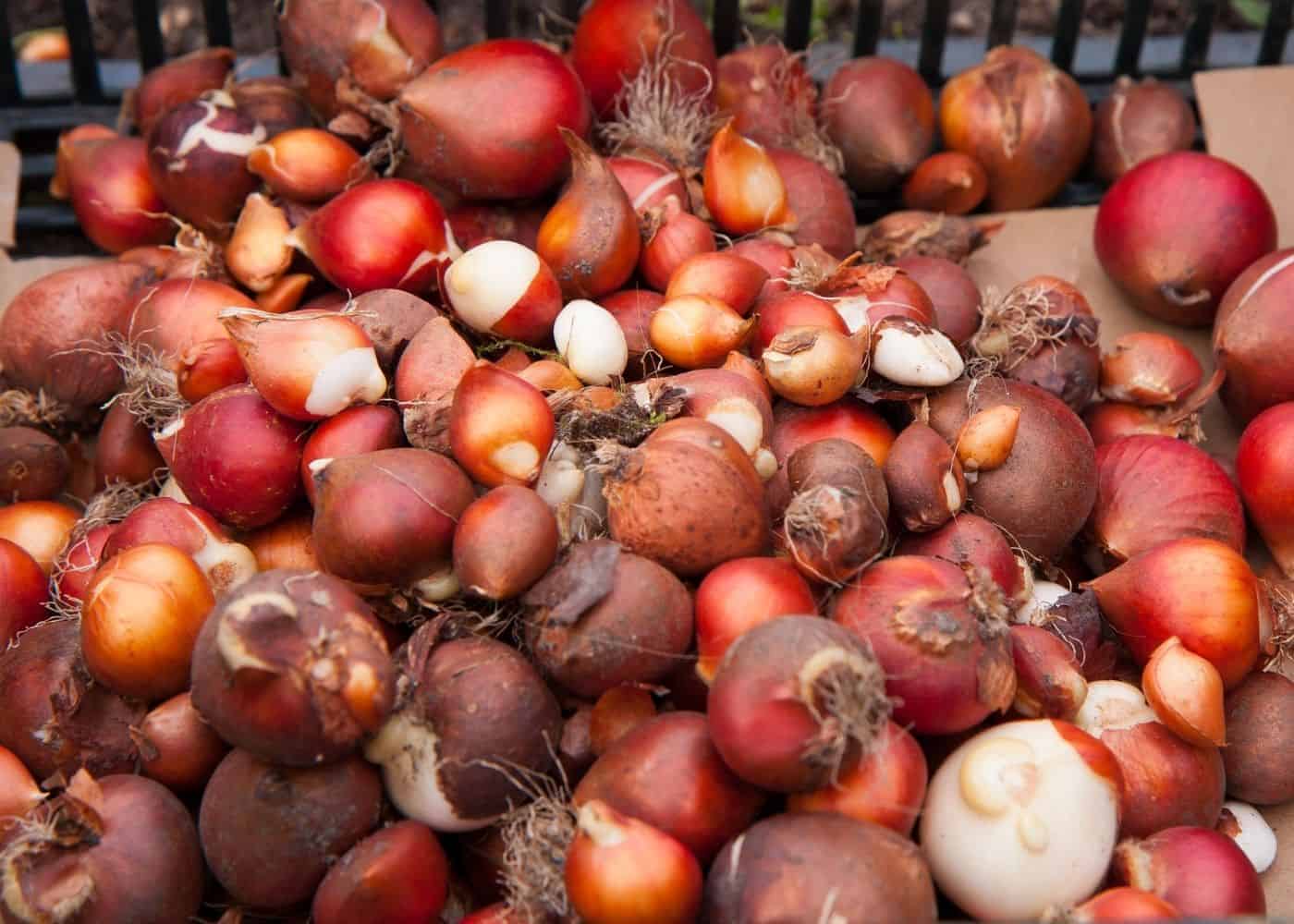
Preparing offset tulip bulbs for storage
Once tulip bulbs are dry, they can be prepared for storage. Start by trimming off dried stems, faded foliage, and crispy roots. Sometimes the dead stalks will twist off, but using a pair of handheld pruners can be easier. Any dirt remaining on the tunic also falls off at this point.
Pick up each tulip bulb. There should be a main bulb in the center surrounded by offset bulbs. The center main bulb – the mother bulb – is the one that bloomed in the spring. This main mother bulb will not bloom again, as tulip bulbs (unlike daffodils) bloom only once during the bulb’s lifespan.
Carefully twist each offset bulb to separate them from the mother bulb. Gather the offsets from each tulip bulb together. The main mother bulbs can be composted at this point, as these bulbs are likely already in decline and will not produce another bloom.
Place the offset bulbs on a baking drying rack to finish drying. Discard any bulbs showing signs of rot. This is a good time to size up the offsets. The largest ones will bloom the following year, but the smaller ones will likely need to spend a year in the ground to grow large enough to develop a flower bud. Keep the smaller ones separate from the larger ones if you plan to place them in a nursery-type garden bed later as they mature.
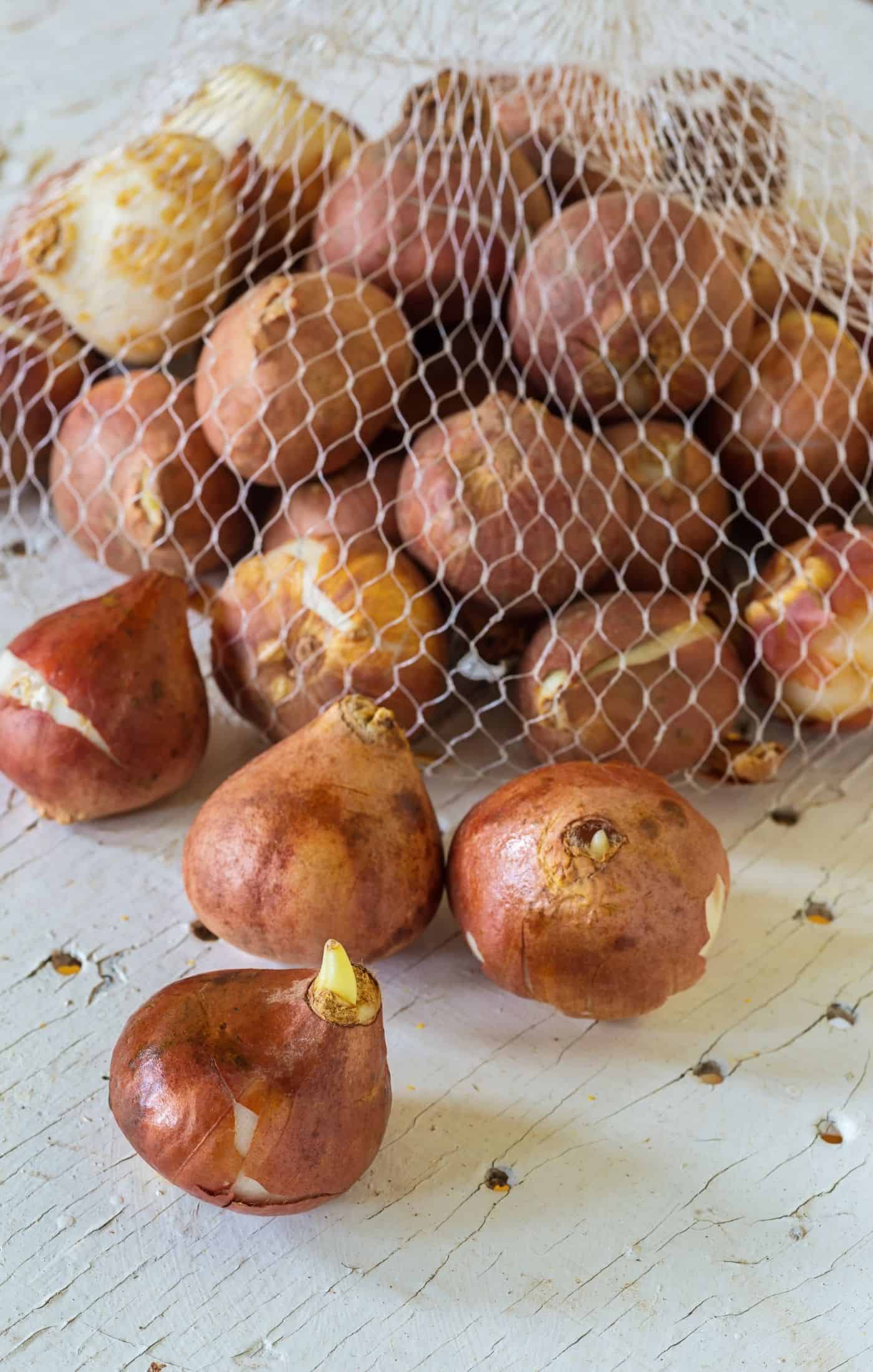
How to store tulip bulbs
The tulip bulb offsets can be stored once they have dried. Tulip bulbs are generally put into storage in mid-summer, often in the timespan between late July and early August.
Place the tulip bulbs into storage bags, taking care to discard any offset bulbs that show rot, such as dark spots or soft mushy areas. Tulip bulbs are commonly stored in mesh bags, string net bags, or paper bags, as these materials are quite breathable. Do not store tulip bulbs in a sealed plastic bag, plastic bin, or any other non-breathable container.
Place the bags of tulip bulbs in a well-ventilated location. The ambient temperature of the storage space is important, as it must be warm enough for the bulbs to develop flower buds in storage but not so warm that the bulbs struggle to survive. Typically a slightly-cool room temperature storage location is best. The ideal temperature range for tulip bulb storage in late summer is 65°-65°F (18°-20°C).
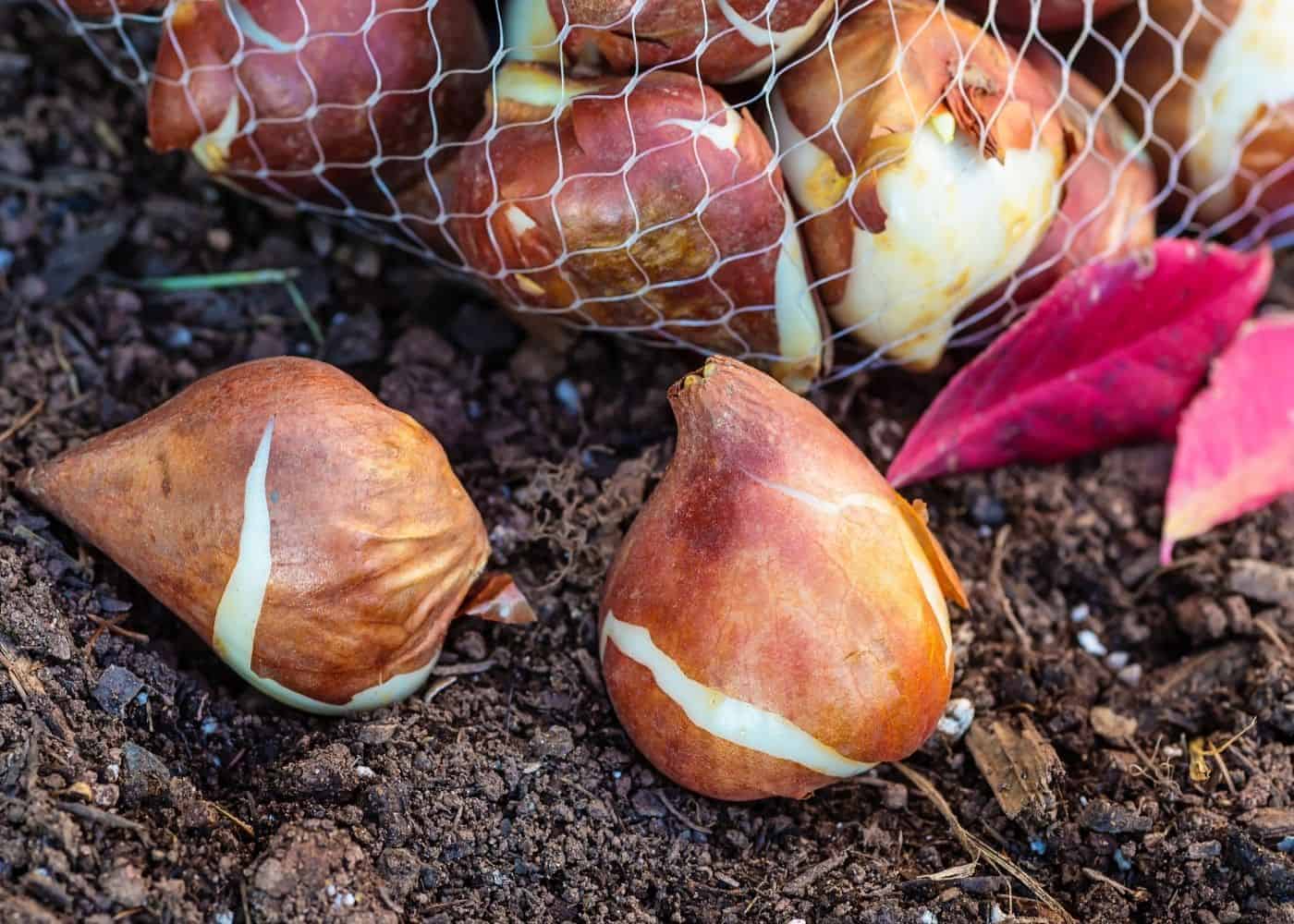
Leave the tulip bulbs in storage from late summer until the correct time for fall planting in your local area. Tulip bulbs should only be planted outdoors when the soil temperature is low enough (but not frozen) to encourage the bulbs to produce roots. Tulip bulbs are generally planted in late September or early October in chilly Zones 3-4, in October-November in temperate Zones 5-7, and in November-January in warm Zones 8-10. Read more about when to plant tulip bulbs.


